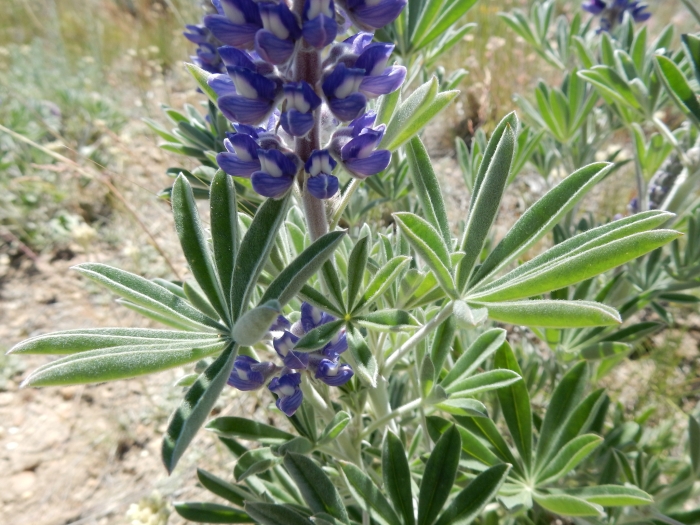Velvet Lupine
(Lupinus leucophyllus)
Velvet Lupine (Lupinus leucophyllus)
/
/

© Matt Lavin
CC BY 4.0
Image By:
© Matt Lavin
Recorded By:
Copyright:
CC BY 4.0
Copyright Notice:
Photo by: © Matt Lavin | License Type: CC BY 4.0 | License URL: http://creativecommons.org/licenses/by/4.0/ | Uploader: mattlavin | Publisher: iNaturalist |

























Estimated Native Range
Summary
Lupinus leucophyllus, commonly known as Velvet Lupine, Whiteleaf Lupine, or Woolly-Leaf Lupine, is a perennial herb that thrives in the open woodlands, grasslands, and chaparral of Western North America. It is particularly adapted to the Pacific Northwest and can be found in regions with well-drained soils. This species exhibits a moderate growth rate, reaching a height of 2-3 feet (0.6-0.9 meters) and a width of 1-2 feet (0.3-0.6 meters). Velvet Lupine is characterized by its velvety, silver-hued foliage and spires of purple or pink flowers that are quite showy, blooming profusely in the spring and summer months.
Velvet Lupine is valued for its ornamental flowers and ability to attract pollinators such as bees and butterflies. It is used in native plant gardens, as a border plant, and for natural landscaping. It is drought-tolerant once established, making it suitable for xeriscaping. In cultivation, Velvet Lupine requires full sun to part shade and performs best in medium to fast-draining soils, including clay, loam, or sandy types. While generally low maintenance, it can be susceptible to fungal diseases in overly moist conditions and may require some protection from slugs and snails.CC BY-SA 4.0
Velvet Lupine is valued for its ornamental flowers and ability to attract pollinators such as bees and butterflies. It is used in native plant gardens, as a border plant, and for natural landscaping. It is drought-tolerant once established, making it suitable for xeriscaping. In cultivation, Velvet Lupine requires full sun to part shade and performs best in medium to fast-draining soils, including clay, loam, or sandy types. While generally low maintenance, it can be susceptible to fungal diseases in overly moist conditions and may require some protection from slugs and snails.CC BY-SA 4.0
Plant Description
- Plant Type: Herb
- Height: 2-3 feet
- Width: 1-2 feet
- Growth Rate: Moderate
- Flower Color: Purple, Pink
- Flowering Season: Spring, Summer
- Leaf Retention: Deciduous
Growth Requirements
- Sun: Full Sun, Part Shade
- Water: Low, Medium
- Drainage: Medium, Fast
Common Uses
Bee Garden, Butterfly Garden, Drought Tolerant, Low Maintenance
Natural Habitat
Native to open woodlands, grasslands, and chaparral of Western North America
Other Names
Common Names: Whiteleaf Lupine, White-leaf bush lupine, Woolly-Leaf Lupine, White-Leaved Lupine, Woolly-Leaved Lupine
Scientific Names: , Lupinus leucophyllus, Lupinus holosericeus var. amblyophyllus, Lupinus leucophyllus, Lupinus leucophyllus var. leucophyllus, Lupinus leucophyllus var. plumosus, Lupinus plumosus,
GBIF Accepted Name: